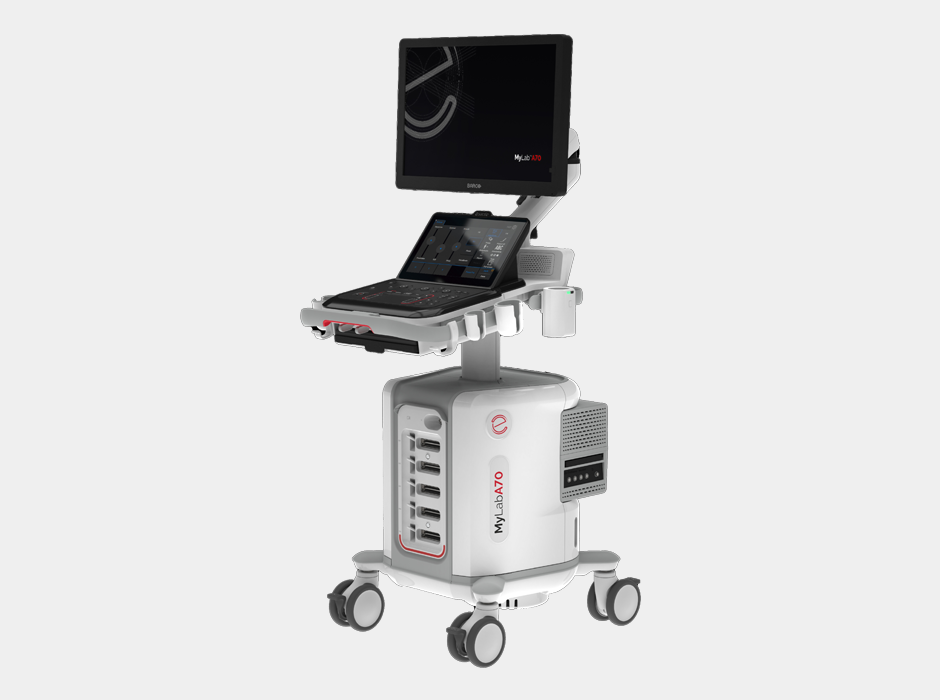World Schizophrenia Day is observed on May 24 on an annual basis to highlight the challenges faced by those suffering from schizophrenia and other forms of psychosis. This day helps educate the public about the severity of these mental health disorders and foster understanding, reduce stigma and promote advocacy efforts. This day is crucial for both community support and advancing treatment approaches.
Schizophrenia, a chronic and severe mental health disorder characterized by distortions in thinking, perception, emotions and behavior, is known to affect about one in 300 people worldwide. Symptoms related to schizophrenia can be divided into three categories: positive symptoms (the presence of symptoms, including hallucinations and delusions), negative symptoms (withdrawal and apathy) and cognitive symptoms (affecting memory and reasoning). Psychosis refers to conditions affecting the mind wherein there has been some loss of contact with reality and involves delusions or hallucinations.
Despite advancements in understanding schizophrenia, persistent misconceptions and stigma continue to amplify challenges for those affected, such as isolation, discrimination and limited treatment access. Correcting these misconceptions through accurate information can mitigate these issues. Although treatment options have improved, the stigma and debilitating symptoms of schizophrenia make daily life difficult, often affecting education, employment and relationships, and leading to significant social and economic exclusion.
XTALKS WEBINAR: Running Successful Neuropathology Studies: Sampling and Preparing Nervous System Tissues for Microscopic Evaluation
Live and On-Demand: June 7, 2024, at 10am EDT (3pm BST/UK)
Register for this webinar today to learn how neuropathology studies should be conducted and gain practical tips on preparing for advanced quantitative neuropathologic techniques.
Impact of Schizophrenia and Psychosis in the US
In the US, approximately 0.25 percent to 0.64 percent of the population, or about 1.5 million adults, are diagnosed with schizophrenia each year. This mental health condition typically manifests in late adolescence to early adulthood and is slightly more prevalent and earlier in onset among males than females.
Individuals with schizophrenia often contend with additional health issues, including cardiovascular diseases, diabetes and a significantly higher smoking rate. The employment rate for individuals with schizophrenia is also considerably lower than that of the general population.
Effective treatment generally includes a combination of antipsychotic medications, psychotherapy and community support. However, about 50 percent of those with schizophrenia suffer from anosognosia, a condition characterized by a lack of insight into their illness, complicating the management of their condition and adherence to treatment plans. The life expectancy of individuals with schizophrenia is also reduced by an average of 28.5 years, largely due to co-occurring medical conditions and a higher risk of suicide.
Despite available effective treatments such as antipsychotics and cognitive behavioral therapy, many individuals do not receive adequate care. Fewer than 33 percent of those affected receive necessary healthcare, with substantial disparities influenced by socioeconomic factors. This treatment gap underscores the urgent need for improved access and tailored interventions to support this vulnerable population.
Related: Navigating Neuroscience Trials: Biomarkers, Imaging and CRO Strategies
Treatment and Support Systems
Schizophrenia management involves a combination of medications, psychotherapy and community support. Note that antipsychotic drugs can help control symptoms as they affect the neurotransmitters in the brain, which in turn can influence thought patterns and perceptions. Psychotherapy, such as cognitive behavioral therapy, can help in managing illness by helping challenge distress-causing thoughts.
In addition to individual treatment, community support and rehabilitation is important for recovery as it focuses on social skills and job training to help individuals lead productive lives. However, access to resources considerably varies by region and is often influenced by societal attitudes and healthcare policies.
FDA-Approved Treatments for Schizophrenia
Schizophrenia treatment typically involves a combination of medication, therapy and comprehensive social support. The US Food and Drug Administration (FDA) has approved many antipsychotic medications central to managing schizophrenia. These medications are broadly categorized into two groups: typical (first-generation) and atypical (second-generation) antipsychotics.
Typical Antipsychotics
Typical antipsychotics are an older class of antipsychotic medications, known primarily for their effect on dopamine receptors, and can reduce the positive symptoms of schizophrenia such as delusions and hallucinations. Some commonly used typical antipsychotics include haloperidol, chlorpromazine, perphenazine and fluphenazine.
These medications can be effective in treating symptoms but may have side effects such as extrapyramidal symptoms (motor control disturbances) and tardive dyskinesia (involuntary movements).
Atypical Antipsychotics
Atypical antipsychotics, which were introduced in 1990s, target both dopamine and serotonin receptors; they are less likely to cause certain severe side effects associated with typical antipsychotics. Some examples of atypical antipsychotics are aripiprazole (Abilify); clozapine (Clozaril), which is particularly effective for treatment-resistant schizophrenia but requires monitoring for agranulocytosis (a potentially life-threatening decrease in white blood cells); risperidone (Risperdal); cuetiapine (Seroquel); olanzapine (Zyprexa); ziprasidone (Geodon); and lurasidone (Latuda).
Long-Acting Injectables (LAIs)
Long-acting injectables (LAIs) such as paliperidone palmitate (Invega Sustenna), haloperidol decanoate (Haldol Decanoate) and risperidone long-acting (Risperdal Consta) are types of antipsychotics that are administered every two to four weeks. These LAIs are particularly valuable in improving adherence to treatment regimens by simplifying the dosing schedule.
Investigational Treatments in Phase III Trials for Schizophrenia
Late-phase clinical trials for schizophrenia are pivotal in advancing medical research and improving the quality of life for those affected by this complex condition. Several innovative treatments are currently under investigation, each with unique mechanisms and potential benefits.
Ulotaront (SEP-363856), in development by Sumitomo Pharma and Otsuka Pharmaceutical, distinguishes itself through its novel mechanism of action. It acts as a trace amine-associated receptor 1 (TAAR1) agonist with additional 5-HT1A agonist activity, which may enhance its effectiveness and offer a better side effect profile, especially in reducing metabolic and motor disturbances.
KarXT (xanomeline–trospium) by Karuna Therapeutics combines xanomeline, a muscarinic receptor agonist, with trospium, which does not cross the blood-brain barrier. This combination specifically targets muscarinic receptors in the brain, which are believed to play a role in the cognitive and psychotic symptoms of schizophrenia, while avoiding peripheral side effects. KarXT is currently under FDA review with a Prescription Drug User Fee Act (PDUFA) date of September 26, 2024. The PDUFA date refers to the deadline by which the FDA commits to reviewing a New Drug Application (NDA) or Biologics License Application (BLA) and issuing a final decision regarding the marketing authorization.
Roluperidone (MIN-101) from Minerva Neurosciences shows potential in addressing the negative symptoms of schizophrenia, such as apathy, isolation and withdrawal, without directly targeting dopamine receptors. This approach may help minimize some of the side effects typically associated with antipsychotics. However, the FDA has not approved the latest application for roluperidone due to a lack of sufficient evidence proving its effectiveness and clinical relevance for patients with schizophrenia. In response, the FDA has requested that Minerva conduct and submit at least one additional positive, adequate and well-controlled study to address these issues. Additionally, Minerva is required to resolve the FDA’s concerns regarding product quality, clinical pharmacology, biopharmaceutics and nonclinical matters.
NaBen (sodium benzoate), under development by SyneuRx International, is under testing as an adjunct treatment for cognitive impairments and negative symptoms in schizophrenia, possibly enhancing the function of D-serine, a critical neurotransmitter. Currently, two Phase II/III clinical trials are underway to evaluate the safety and efficacy of NaBen as an adjunctive treatment for schizophrenia, with one trial focusing on adolescents and the other on adults.
To summarize, these investigational treatments could considerably expand the options available for schizophrenia management. Moreover, they may offer potential improvements in efficacy, reduced side effects and better overall quality of life for patients.
Awareness days such as World Schizophrenia Day 2024 play an important role in changing public perceptions. By increasing awareness and knowledge related to mental health disorders, these initiatives help reduce stigma surrounding mental health issues.
Note that awareness promotes early intervention, which is important for schizophrenia treatment. Early diagnosis and treatment can considerably improve long-term outcomes, reducing the possibility of severe complications and enabling individuals to lead fulfilling lives. Moreover, advocacy encourages more resources and support for research, leading to improved treatment options and a better understanding of these mental health disorders.












Join or login to leave a comment
JOIN LOGIN